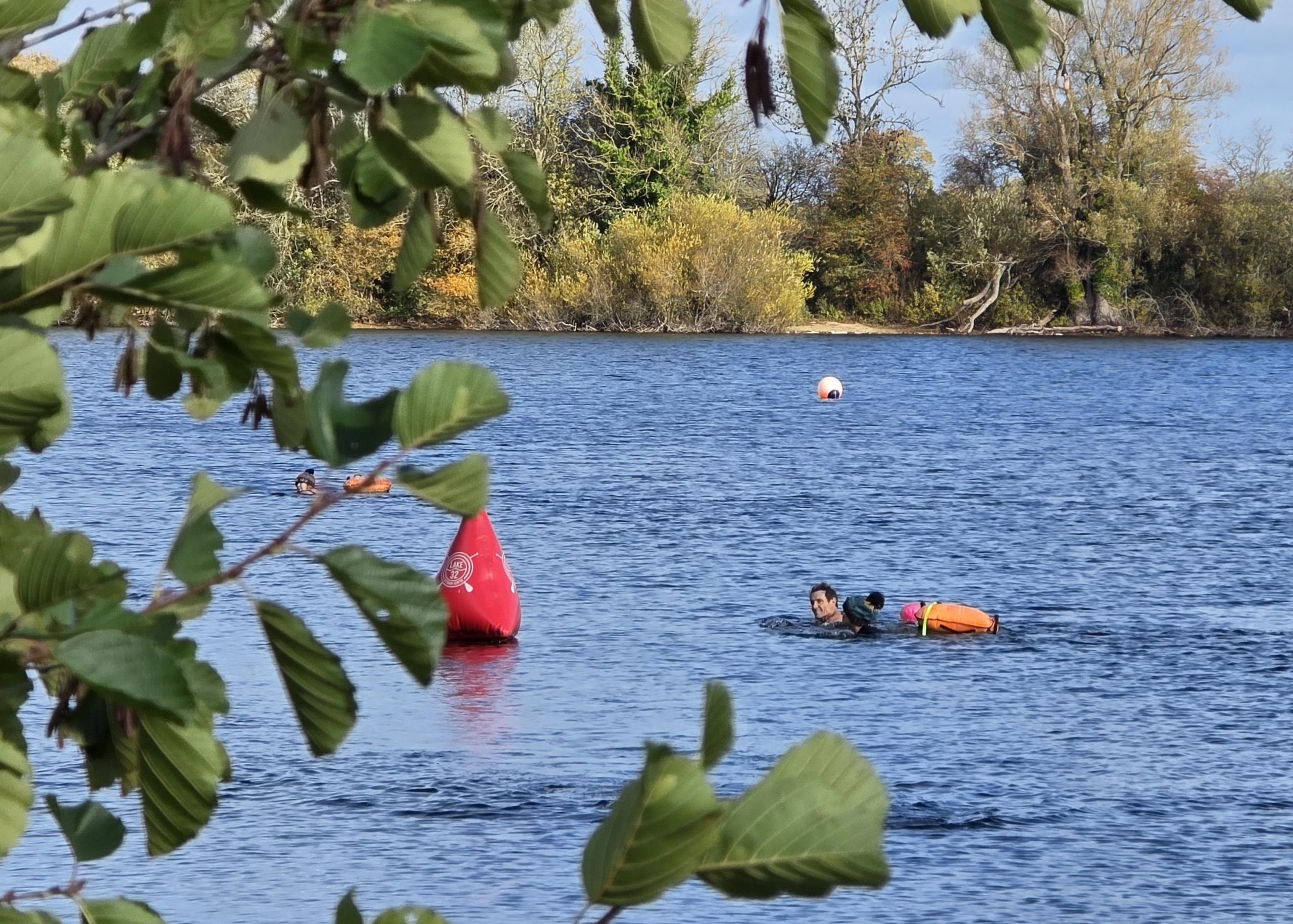Both involve trepidation, discomfort, enjoyment and euphoria
Last Saturday, I was invited to give a short talk about winter swimming at Lake 32 in the Cotswolds. It’s a beautiful, clear lake and looked stunning in the autumn sunshine, surrounded by colourful trees.
I wasn’t given much of a brief. I didn’t know who would be there, if they had any winter swimming experience or what they were expecting. I was led to an open-sided marquee with around 30 to 40 people sitting around, introduced briefly and left to get on with it.
It was a little nerve-wracking.
In fact, it was a bit like winter swimming.
Trepidation
As I approach any winter swim, self-doubt starts to build. Do I really want to do this? Is it worth it? I know it will be uncomfortable, especially initially. But it will feel good when it is done. Giving this talk was the same.
Pushing the metaphor further, I knew my first task was to break the ice. Cue the customary thank yous for the invitation and attention, and some words about their beautiful lake.
Discomfort
In a winter swim, the first couple of minutes are the hardest. This is when the water hurts your skin, rather than making it tingle. But you also know that it will get easier if you relax, control your breathing and press on.
The same with the talk. I couldn’t panic and bail out at this point. I need to share something relatable about myself, and also find out more about my audience. I recounted how I had grown up in the area and used to visit the lakes as a child, building fond and lasting memories. I then asked how many people were planning on swimming through winter for the first time. I was relieved to see a good number of hands shoot up. Hopefully, that meant I’d have some useful experiences to share.
Enjoyment
After that, it really did get easier. I warmed up – or at least I’d got used to the idea of standing at the front of a tent full of strangers and talking. I’d prepared notes on the various hazards in winter swimming*, and spoke about the benefits and what I get out of it, including how winter swimming possibly prepares us to handle other stressful situations in life, such as public speaking.
In another parallel to winter swimming, just as you shouldn’t outstay your welcome in the water, you should not prolong a talk unnecessarily. I wrapped up by light-heartedly apologising for possibly putting them off with the safety warnings and invited questions, which luckily I could answer.
Euphoria
And then it was all over. Just like a winter swim, I could bask in the satisfaction of having faced something that made me nervous, doing it regardless, and discovering – after the initial discomfort – that it was enjoyable. I also sold a couple of books and magazines, which was a nice bonus.
After my talk, I went through the same emotional experience again with a swim in the lake, at 10.5 degrees.
Lessons for life
A key aim of Renaissance Swimmer is to encourage swimmers to embrace a wide range of swimming experiences, including winter swimming, and to seek parallels between swimming and life experiences. If you haven’t yet, and you’re in the northern hemisphere, now would be a good time to start. You never know, it may even help your public speaking.
*For general open water swimming safety advice and water temperature hazards, please see Open Water Safety. For more details, see Swim Wild and Free: A Practical Guide to Swimming Outdoors 365 Days a Year.

